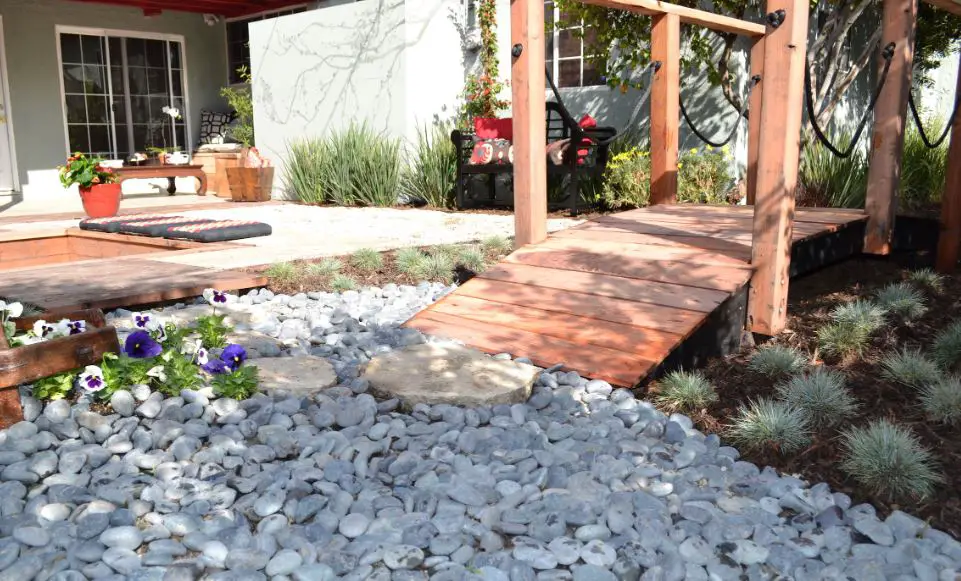The long-term sustainability of backyard grass is a topic of much discussion. Turf grass has to be cut, watered, fertilized, and managed for weeds and pests. The high nitrogen requirements of grass lead to a run-off issue that pollutes untamed rivers. The mechanical tasks might lead to a rise in greenhouse emissions and noise pollution. Chemical treatments to eradicate weeds like dandelions and create lush, healthy grass may damage the planet and the species that live there. With such drawbacks, switching out the grass for gravel could seem smart. You may miss dipping your bare toes in the lush foliage when you go from grass to gravel, but you can also save money, time, and the environment.
Often pictured with a lawn that would look at home on a golf course, the suburban fantasy house. Turf grass is a common feature around many residences, particularly in America. Yet, as gardeners want to streamline tasks and create a more sustainable environment, employing gravel for garden décor is growing in popularity. Any online search will provide many simple and attractive gravel front yard ideas. Also, if you can not bear having such a plain front yard, consider putting a rear gravel landscaping to make up the difference.

Gravel landscapes: Advantages and Disadvantages
The garden’s additions of gravel and pebbles are inorganic. After installation, these products do not need to be maintained and are reasonably simple to purchase. They do not need any care, including watering, fertilizing, controlling pests, etc. Also, they aid in the directed water flow, eliminating extra moisture from the home’s surroundings. The rain garden or xeriscape idea benefits greatly from the use of gravel. Moreover, gravel acts as a mulch, retaining soil moisture near plant roots. But is gravel really what it seems to be?
Gravel will also capture solar energy, heating the rock and perhaps frying any possible plant roots that may be there. Weeds will grow even with a weed barrier below the cloth, necessitating time-consuming weeding. Installing gravel and rock requires considerable work since they are hefty materials. And since rock is inorganic, it neither supports benevolent creatures nor improves the health of the soil.
Should You Replace Your Lawn With Gravel?
Your style, landscaping objectives, and even your hardiness zone all factor into whether you should convert your grass to gravel. Rocks in hot climates will be quite heated, harming plant roots and the odd venture barefoot. The heat reflected off the pebbles may heat the house, decreasing energy efficiency. The gravel area becomes unattractive due to the accumulation of dust and dried leaves, which must be removed. This substance will also enable weed seeds blown in to germinate and grow. But, in certain areas, using gravel or rock instead of grass might make sense. The trade-off between upkeep and installation costs and your vision for the home’s surrounding landscaping will decide the answer.
How to Use Gravel Instead of Grass
The first problem is getting the sod removed if there is already grass there. It may be removed by excavating, poisoning, or burying it beneath a dense, black plastic layer to suffocate. Mechanical removal is the least hazardous method and the fastest.
Consider placing weed barrier fabric under the gravel once the area has been removed. These materials are cheap and will assist with some weed management, but those stoic plants will surely reappear.
Choose your gravel once the location has been prepared. There are several sorts to choose from, including crushed, river, cobble, and composite forms. Apart from differences in color and size, each offers unique advantages. Consider utilizing locally supplied gravel to save on expenses and the environmental impact. Whenever feasible, choose plants that are indigenous to the area. They will still be diverse and beautiful but also adaptable and simple to care for.


